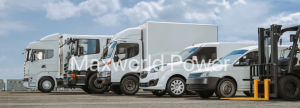Why the Future of Batteries Is Lithium?

I frequently hear complaints about batteries being insufficiently good—that is, costing too much, not holding enough energy, or taking too long to charge. In summary, they are unable to supply the energy needed for daily household demands or to supplement solar panels in an automobile.
What’s interesting is that I concur with every critique. But I’m also confident that these issues will be resolved in the upcoming years as a result of the use of novel materials and chemistries and fierce rivalry among battery producers. Better batteries, in my opinion, will also result in the electrification of trucks, buses, and an increasing amount of air and sea transportation in addition to vehicles.
These batteries will be utilized concurrently by our homes, companies, and grids as a component of decentralized energy systems. And the element lithium will probably serve as the foundation for all of these batteries.
Is Lithium the Battery of the Future?
It is easy to think oflithium-ion batteriesas the batteries with the power to alter the course of history. In several consumer goods and the electric cars produced by Tesla and other multinational corporations, they are now the go-to batteries.
There are still certain issues with this battery that need to be resolved, even though these batteries have a lot of potential to solve many problems in the future.
To begin with, compared to conventional batteries, Lithium metal electrodes generate a higher energy density. It has said that, dendrites, or structures resembling fingers, may form on lithium metal electrodes and may be the cause of the battery’s final short circuit.
By substituting a carbon electrode containing lithium ions for the lithium metal electrode, the issue was lessened. As a result, lithium-ion batteries were developed, but with a lower energy storage capacity than batteries that use a lithium metal electrode.
One other issue that has been brought up a lot with Lithium-ion batteries is their propensity to burst or catch fire when damaged. This has occurred with laptops and cell phones.
This is exactly what might start a severe fire—if these batteries are broken, the energy within them will be released rapidly and for a brief period of time.
Nevertheless, since lithium-ion batteries have the potential to transform the world, their benefits cannot be understated. Its great energy density is one of the major pros of this technology. Furthermore, contrasted to other rechargeable cells, there is a substantially reduced self-discharge among lithium-ion batteries.
Furthermore, the optimal functioning of Lithium-ion batteries requires relatively little maintenance. They come in a range of varieties and do not require priming on the initial charge.
Certain Lithium-ion batteries are ideal for consumer electronics due to their high current density, while other batteries offer high current levels that make them suitable for power tools and electric cars.
The quantity of amperage has a significant influence on how rapidly a lithium battery recharges, just like it does with any rechargeable battery. As we have mentioned, lithium has a much higher potential charging rate than lead-acid. This is brought on by the decreased internal resistance of lithium. Lead-acid batteries can only be “bulk” charged at a rate of.3C, or 30% of their capacity, and must then undergo an absorption phase that may last even longer. In comparison, lithium batteries can be “bulk” charged at.8C, or 80% of their capacity. This was one of the factors that encouraged some owners of lithium batteries to install more powerful, larger AC battery chargers, like a 60 or 80 amp device. Additionally, it explains why so many homes have solar panels on the roofs.
Improved Materials
Due to its exceptional light weight and lowest reduction potential among all chemical elements, lithium is a substance that makes batteries based on it function unmatched. The US Geological Survey estimates that there is enough lithium in the earth to last 400 years, which is another benefit.
Lithium-ion battery is the most widely used type of lithium battery. They are the preferred rechargeable battery for power tools, cell phones, computers, and increasingly, electrical vehicles (EVs) due to their unparalleled blend of increased energy and power density. It has said that, lithium-ion batteries come in a lot of forms.
Dispersing Silicon
One of the more intriguing options is to employ silicon, which is less expensive and has the potential to be ten times more energy dense than graphite, in place of the lithium-ion battery’s current anode. Remember that I stated theoretical since silicon has a short lifespan due to its rapid degradation.
The good news is that a lot of companies, including Wacker Chemie and Nexeon, are working to find a solution for this problem. In fact, it’s commonly thought that Panasonic and Tesla have already started adding silicon to the anode side of their new Model 3 batteries. Other technological advancements might include switching from the battery’s present liquid electrolyte, one of its essential components, to a solid electrolyte, which would increase energy density and be safer. All of these adjustments will take time, though.






